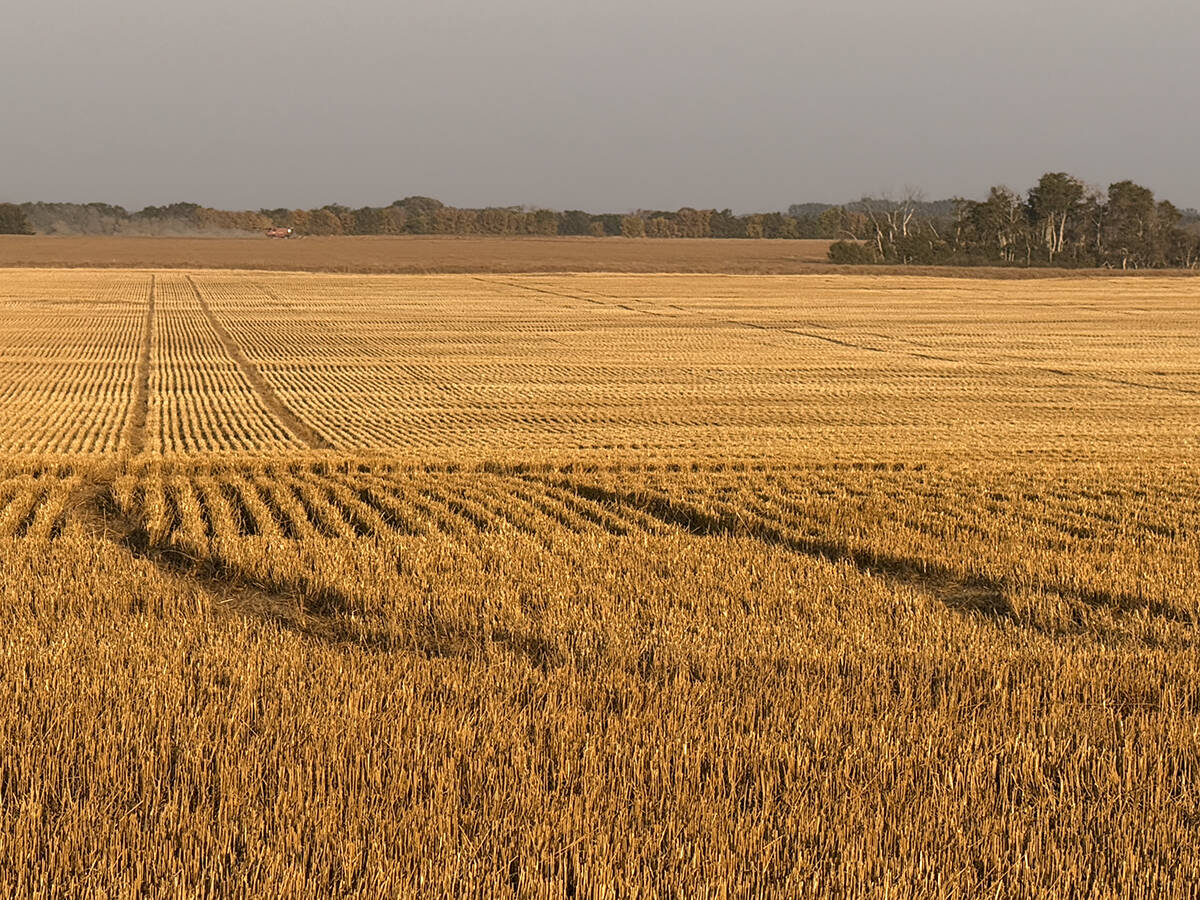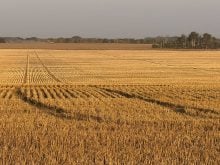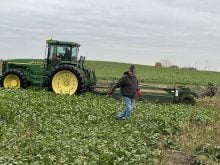When an unfamiliar pickup truck pulls into his driveway, Brian Reynolds knows he will soon be sorting through a pile of wooden bits and metal shards.
“You get someone come over with some mangled bits of metal in the back,” said Reynolds, who works as a part-time wheelwright and wainwright on his farm near Rapid City, Man., where he builds wheels, wagons and carriages.
“The last one I built was (from fragments) actually bulldozed into a stone pile in the field …. We do the complete restoration of cutters, buggies and wagons. Basically anything horse-drawn.”
Read Also

Final crop reports show strong yields, quality
Crops yielded above average across the Prairies this year, and quality is generally average to above-average.
Reynolds showed off his skills at the Royal Manitoba Winter Fair in Brandon in late March, demonstrating the nearly lost art of constructing wooden wheels.
Reynolds started as a wheelwright eight years ago before his son’s wedding.
His son wanted a carriage for the wedding, so Reynolds, then simply a woodworker, set out to build one.
“I built the horse drawn vehicle, but I couldn’t build the wheels.”
He eventually finished the project with the help of a friend.
That experience piqued his interest in the art of wheelwrighting. He took a wheelwright’s course at the Western Development Museum in Saskatoon, and not long afterward, he was building wheels for himself and for customers.
Reynolds moved to Manitoba from Wales with his wife and children in 1993 because the family was looking for a change.
After three years of farming, Reynolds, an engineer, set up a business that repairs and installs power plants, such as ship engines.
Despite having that skill, Reynolds discovered that building a strong and reliable wheel out of wood is not easy.
“Wheelwrighting is nothing new, but you had this gap from say the 1930s to the present time, where it was just a dead art,” he said while standing next to the carriage he built for his son’s wedding.
Ron Grieg, head of the Manitoba chapter of the 150-member Western Canadian Wheelwright’s Association, thanks the Amish for preserving the art of wheelwrighting.
“Largely because of the Amish community in Canada and the States, you can still get any part you want for any buggy or wagon.”
Grieg said the challenge is part of the attraction of building wooden wheels.
“It’s not as easy as it looks. You just don’t take sticks of wood and stick them in holes in a centrepiece,” he said.
“There’s a time-tried method for it.”
Pointing to a wheel on his carriage, Reynolds said it is actually concave, like a plate. The curvature provides strength and stability.
“Although they look quite light and fragile, these wheels are capable of carrying 700 pounds each, but they’ll only do that if they’re built correctly.”
He said wheels had to be built that strong because concrete or asphalt pavement was a rarity 100 years ago.
“At the turn of the last century, you have to remember that the roads were heavily rutted,” he said. “These things were constantly bouncing around, with a lot of side load. That (curvature) is what takes that load. If it was just straight, it would break the spokes.”
Reynolds uses primarily wood native to Manitoba for his wheels, such as hickory and oak. He uses only air dried timber because kiln-dried wood cannot be bent with steam.
Aside from the challenge of sorting through a pile of metal and wood in the back of a pickup and turning it back into a wagon or cutter, Reynolds said he enjoys the reward at the end of the process.
“I was never into horse drawn vehicles until I built one and drove it,” he said, breaking into a grin.
“But once you actually take one out on the road and drive it, it’s a really pleasurable experience. It’s smooth, it’s quiet and it gives you a break from everyday living.”















